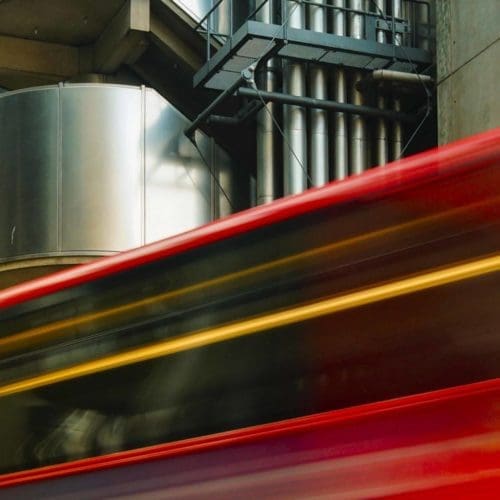Muhammad Tayyad v Rilta Environmental Limited [2020] IEHC 251
June 2020In a recent decision, the High Court confirmed the position in relation to section 12 of the Personal Injuries Assessment Board Act 2003 (‘the PIAB Act’) and the preservation of evidence thereunder. The issue addressed concerned the extent of the Court’s jurisdiction to make an order for the preservation of evidence in relation to personal injures claims which had not yet become the subject matter of any proceedings at the time of the application.
The Personal Injuries Board Act 2003
Since its passing, the relevant provisions of the PIAB Act require that all personal injuries claims – bar a small number of specific exceptions – must proceed through the Injuries Board before a claim for compensation can be processed by the Court. Section 12(1) provides that a claimant may not bring proceedings unless an application for assessment has been made to the Board and an authorisation (to issue proceedings) has been obtained.
In addition to setting out the prerequisites for the institution of proceedings, section 12(2) provides the parties with a mechanism to apply to the court for an order for the preservation of evidence pending receipt of an authorisation from the Injuries Board. Pursuant to Subsections 4(b)(i) and (ii) a court, before making such an order, must be satisfied that the application is bona fide and brought for the sole purpose of ensuring the fair and just disposition of any proceedings which may potentially come into existence following the issuance of an authorisation under section 12(1). Furthermore, an order of the type stated may only be granted if doing so does not prejudice any proceedings which are in being or may be followed under the Act in relation to the relevant claim.
The facts
Having submitted his claim to the Injuries Board for assessment, and prior to the institution of proceedings, the applicant sought an order pursuant to section 12(3) of the PIAB Act, requiring the respondent to preserve certain items of evidence. The claim in question arose out of an incident, which involved the claimant allegedly having tripped on a wet surface while ascending a ladder in his workplace on 7 January 2019. The items of evidence the subject matter of the application were an incident report form, CCTV footage of the incident, as well as the cleaning roster for the respondent’s premise for a period of 3 days (6 to 8 January 2019).
Submissions to the High Court
Counsel for the applicant argued that similar to the principles applicable to the preservation of evidence in criminal actions, the provisions of section 12 must be construed in such a way as to grant the court jurisdiction to order the preservation of articles which may give rise to the reasonable possibility of securing relevant evidence.
Further, it was the applicant’s position that all three elements of the test outlined in section 12(4) had been met. A number of items of correspondence had been sent by the claimant’s solicitors (prior to the making of the section 12 application) to which no response was received. The applicant alleged that the repeated attempts contained within the letters to call upon the respondent to preserve the items in question, coupled with the notice in writing given to the latter of the former’s intention to make an application pursuant to section 12 if a reply was not forthcoming, sufficed as an illustration of the bona fide nature of the application.
As regards compliance with the second limb of the test, Counsel suggested that the items in question were relevant to his client’s ability to establish its case and that consequently, a failure to preserve the articles could fatally prejudice the position of the applicant and result in him being considerably disadvantaged in the presentation of his claim. Preservation of the items was thus necessary to enable the fair and just disposition of potential proceedings.
Lastly, emphasis was placed on the fact that the respondent was not required to take any positive action to facilitate the preservation of the items in question. As such, no undue burden would be placed on either party in the event that an interlocutory order was made by the Court.
Counsel for the respondent on the other hand referred to the decision in Softco – v – DHL Information Services (Europe) S.R.O [2013] IEHC 623 to demonstrate the restrictive approach it felt ought to be favoured by the court in its assessment of the applicant’s request. In Softco, the High Court had to consider an application for an order permitting the claimant to inspect the defendant’s property pursuant to O. 50, r. 4 of the Rules of the Superior Courts.[1] The aforementioned provision generally authorises the Court to make the appropriate interlocutory order resulting in the procurement and / or inspection of any items which are considered necessary for the purpose of obtaining full information or evidence. In the specific circumstances, the applicant alleged that it could not plead its case until such time that it had examined the contents of a number of the defendant’s computers.
Rejecting the application, Mr Justice Ryan held that the order would only be granted if it could be shown that the facilitation of an inspection was practically necessary to achieve the purpose of the provision (i.e. obtain full information or evidence). On the basis of the limited information to hand, and particularly pending submission of the applicant’s Statement of Claim, Mr Justice Ryan was not satisfied that the required level of proof of necessity had been established. It appeared to him that the purpose of the requested inspection was to ascertain the strength of the applicant’s case, rather than to substantiate same. In that regard, he concluded that there was no question of the applicant being unable to plead its statement of claim. An inability to predict the quality of one’s case is not determinative of the entitlement to an inspection and / or other interlocutory orders.
Held
Although Mr Justice MacGrath stressed the point that the type of application in Softco differs significantly from an application under section 12, he shared the applicant’s view that, in accordance with section 12(3), the provisions of O. 50, r. 4 were equally relevant to the case at hand. To that end, the standard of proof applicable to an application for an interlocutory order sought in the context of a claim where proceedings are in being, should also be adopted in relation to an application made prior to the institution of proceedings. The wording of the provision suggests that the powers bestowed on the Court by virtue of section 12(4) ought to be exercised only in circumstances where the court is satisfied that all aspects of the aforementioned three-limb test have been met. In that regard, Mr Justice MacGrath found that the applicant had discharged the onus of proof conferred on him. Amongst the factors contributing to his decision, was the judge’s belief that no great burden would be placed on the respondent in the event that the applicant’s request was complied with. Further, he was of the opinion that the applicant’s numerous attempts at liaising with the respondent with regard to conserving the specific articles of evidence, sufficed as a means for establishing the bona fide character of the application for preservation.
Concerning the second aspect of the test, it was clear to him that the items referred to in the applicant’s notice of motion were potentially relevant evidence in a case which centres around an incident in the workplace, and that the preservation of the articles was therefore necessary to enable the fair and just disposition of any proceedings which may issue at a later stage. As for the third requirement under section 12(4) which obliges the court to ensure that the manner in which any application is dealt with does not prejudice any procedures which are in being or may be followed, the judge concluded that the only procedure activated was the claimant’s application to the Injuries Board and that there was nothing to suggest that the making of an order for preservation would result in said application being prejudiced.
For the reasons provided, Mr Justice MacGrath made an order pursuant to section 12 for the preservation of the relevant CCTV footage and incident report. However, it is noteworthy that the court refused to comply with the applicant’s request in relation to the preservation of the respondent’s cleaning roster. It was felt that requiring the respondent to preserve the rosters for its entire premises for a period of three days was unnecessarily broad and not required to ensure the fair and just disposition of any proceedings that may be instituted in the future. To that end, Justice MacGrath confirmed that any order made in accordance with section 12(3) cannot be of greater scope than the type of order the court has jurisdiction to make pursuant to O.50 r.4). The same principles which restrict the exercise of the court’s power to grant interlocutory orders within extant proceedings, must be applied to an application under section 12. Consequently, the court must only order the preservation of items which it is satisfied are relevant, necessary and proportionate in the circumstances. On that basis, the order for preservation of the cleaning rosters was restricted to those pertaining to the ladder on which the claimant was working at the time of his fall, and the room in which the climbing structure was situated.
Conclusions to be drawn
As a result of the decision, the principles applicable to applications for interlocutory orders under O. 50, r. 4 have now effectively been adopted as the relevant basis for assessing an application pursuant to section 12. As such, any party from whom preservation of evidence is sought in the context of a personal injuries claim, will be subject to the same treatment to which it would be subject if the application were to be made in the course of proceedings, regardless of whether or not proceedings have in fact issued. Although it appears as though the court sought to limit the scope of application of section 12 by introducing the principles of relevance, necessity and proportionality as mandatory requirements, without having access to the machinery of pleadings and particulars, it may prove difficult for a court to assess whether an item in respect of which preservation is sought fulfils these requirements and thus qualifies as an appropriate matter for preservation. In essence, it may be the case that by dispensing with the need for pleading that which one seeks to recover, the balance of justice is tipped – to some extent – in favour of the claimant.
It is nevertheless clear that for an applicant to be successful, they must produce some evidence of the bona fide nature of their application, as well as establish that in order for them to plead their case should they wish to bring proceedings, the preservation of the items in question will be necessary. The acceptable nature and extent of the evidence required to discharge this onus however, will ultimately be a matter left to the discretion of the court.
For further information please contact Martin Browne.
[1] O. 50, r. 4 provides that ‘The Court, upon the application of any party to a cause or matter, and upon such terms as may be just, may make any order for the detention, preservation, or inspection of any property or thing, being the subject of such cause or matter, or as to which any question may arise therein, and for all or any of the purposes aforesaid may authorise any person to enter upon or into any land or building in the possession of any party to such cause or matter and for all or any of the purposes aforesaid may authorise any samples to be taken or any observations to be made or experiment to be tried, which may be necessary or expedient for the purpose of obtaining full information or evidence.’
Download PDF






